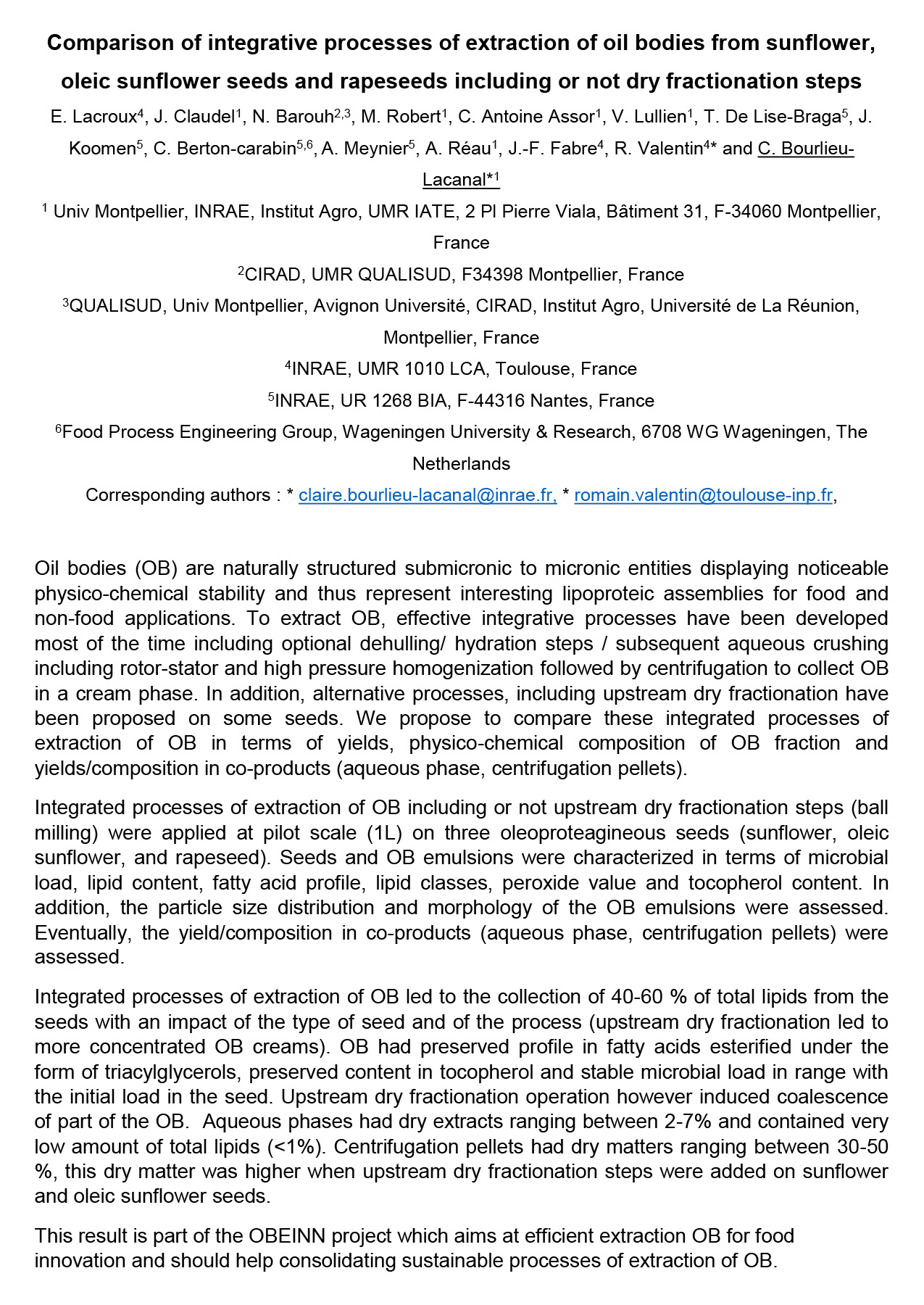Oil bodies (OB) are naturally structured submicronic to micronic entities displaying noticeable physico-chemical stability and thus represent interesting lipoproteic assemblies for food and non-food applications. To extract OB, effective integrative processes have been developed most of the time including optional dehulling/ hydration steps / subsequent aqueous crushing including rotor-stator and high pressure homogenization followed by centrifugation to collect OB in a cream phase. In addition, alternative processes, including upstream dry fractionation have been proposed on some seeds. We propose to compare these integrated processes of extraction of OB in terms of yields, physico-chemical composition of OB fraction and yields/composition in co-products (aqueous phase, centrifugation pellets).
Integrated processes of extraction of OB including or not upstream dry fractionation steps (ball milling) were applied at pilot scale (1L) on three oleoproteagineous seeds (sunflower, oleic sunflower, and rapeseed). Seeds and OB emulsions were characterized in terms of microbial load, lipid content, fatty acid profile, lipid classes, peroxide value and tocopherol content. In addition, the particle size distribution and morphology of the OB emulsions were assessed. Eventually, the yield/composition in co-products (aqueous phase, centrifugation pellets) were assessed.
Integrated processes of extraction of OB led to the collection of 40-60 % of total lipids from the seeds with an impact of the type of seed and of the process (upstream dry fractionation led to more concentrated OB creams). OB had preserved profile in fatty acids esterified under the form of triacylglycerols, preserved content in tocopherol and stable microbial load in range with the initial load in the seed. Upstream dry fractionation operation however induced coalescence of part of the OB. Aqueous phases had dry extracts ranging between 2-7% and contained very low amount of total lipids (<1%). Centrifugation pellets had dry matters ranging between 30-50 %, this dry matter was higher when upstream dry fractionation steps were added on sunflower and oleic sunflower seeds.
This result is part of the OBEINN project which aims at efficient extraction OB for food innovation and should help consolidating sustainable processes of extraction of OB.
